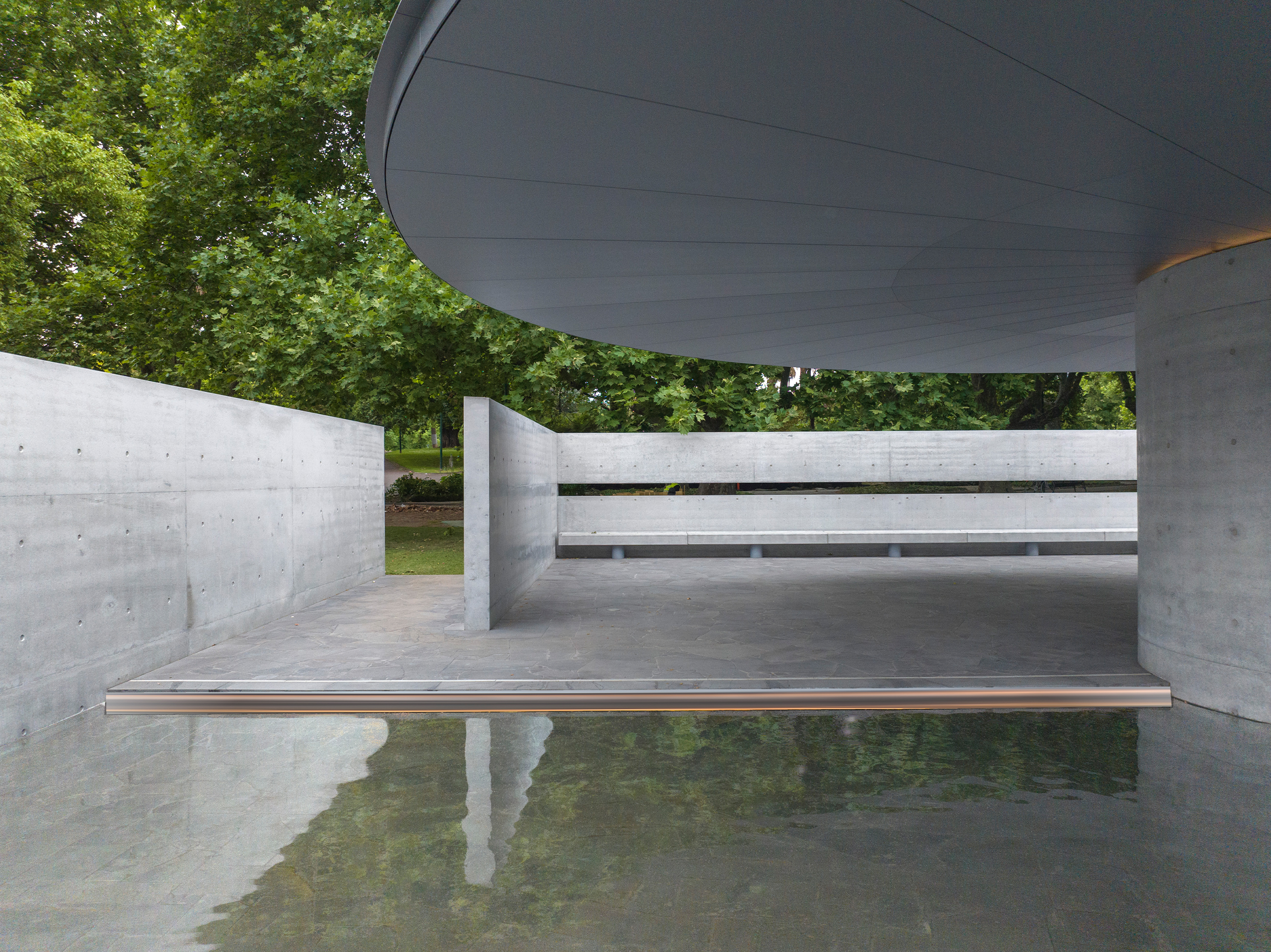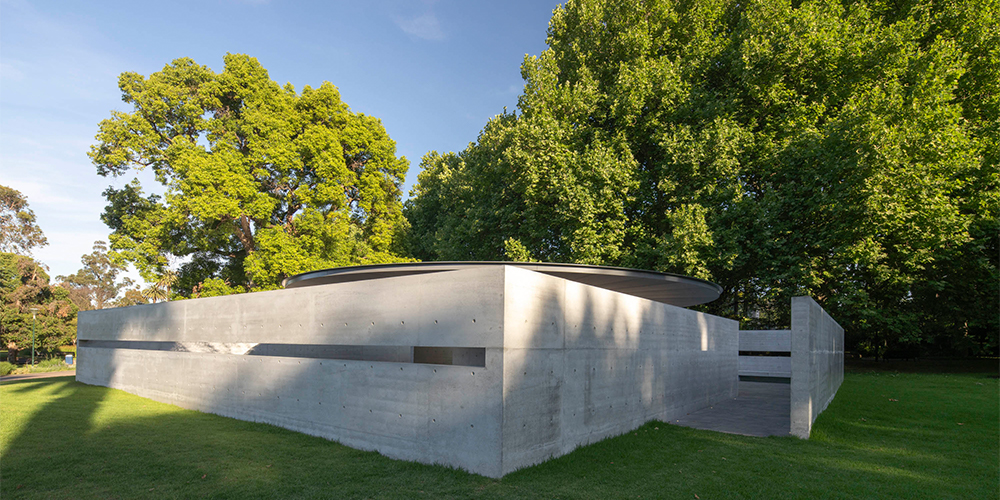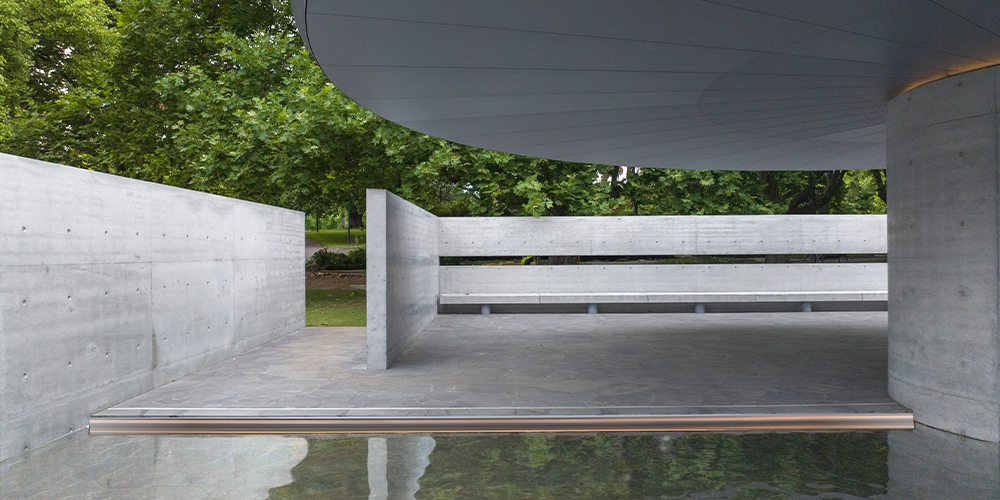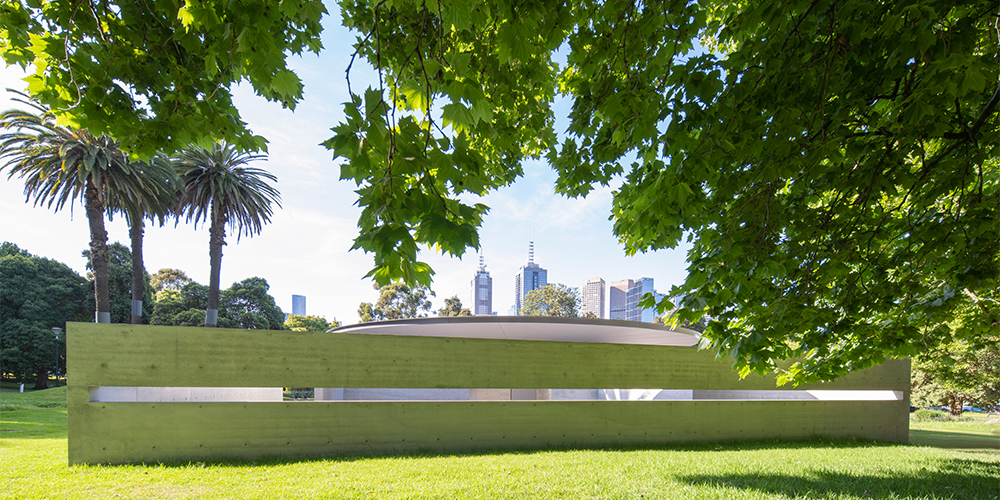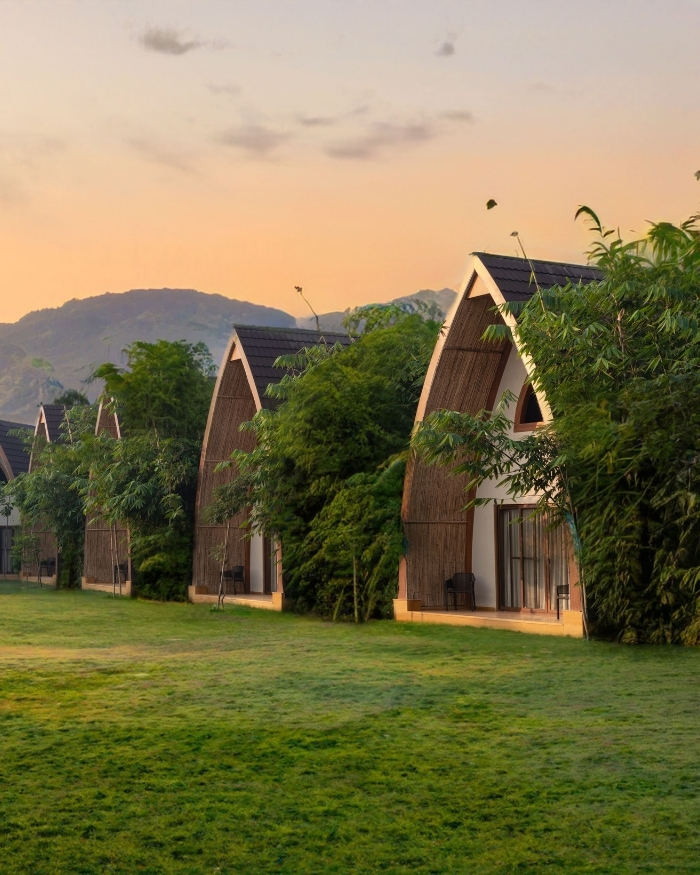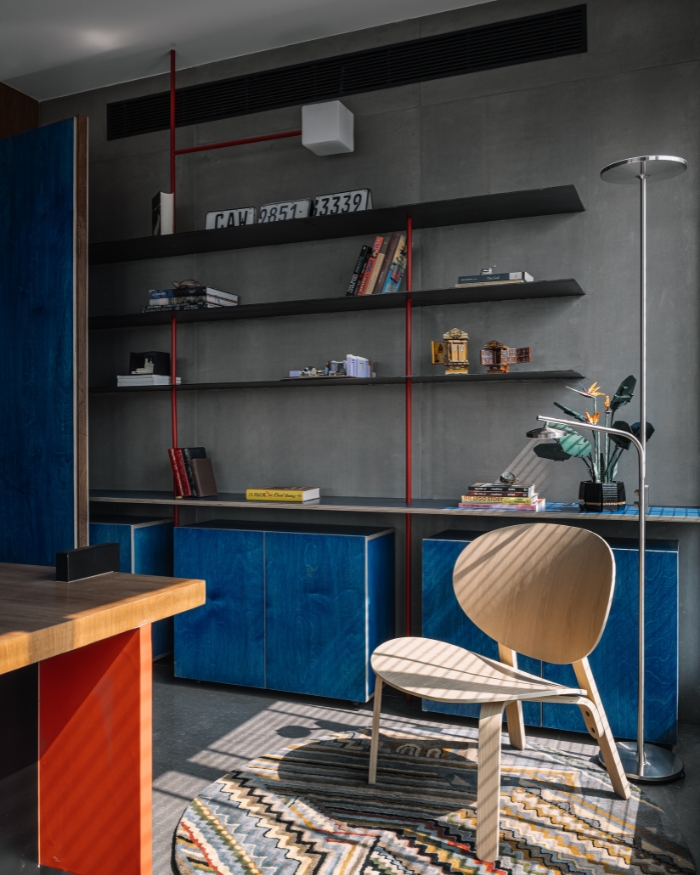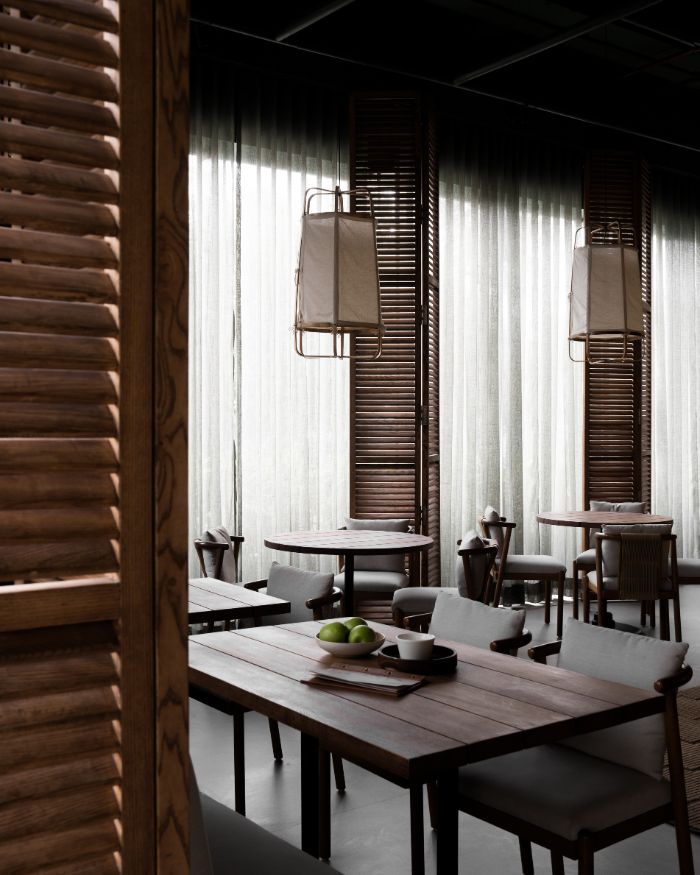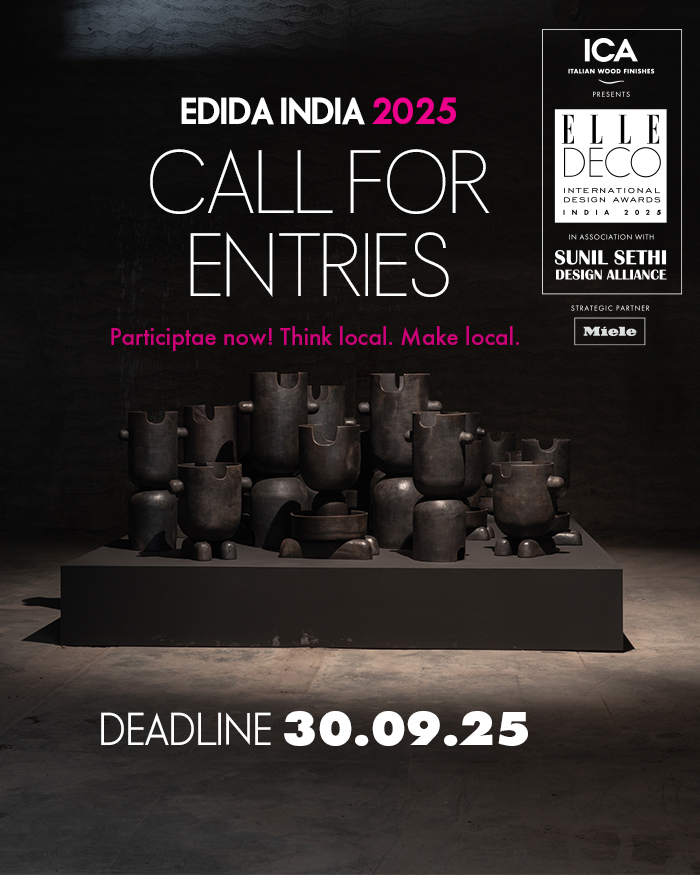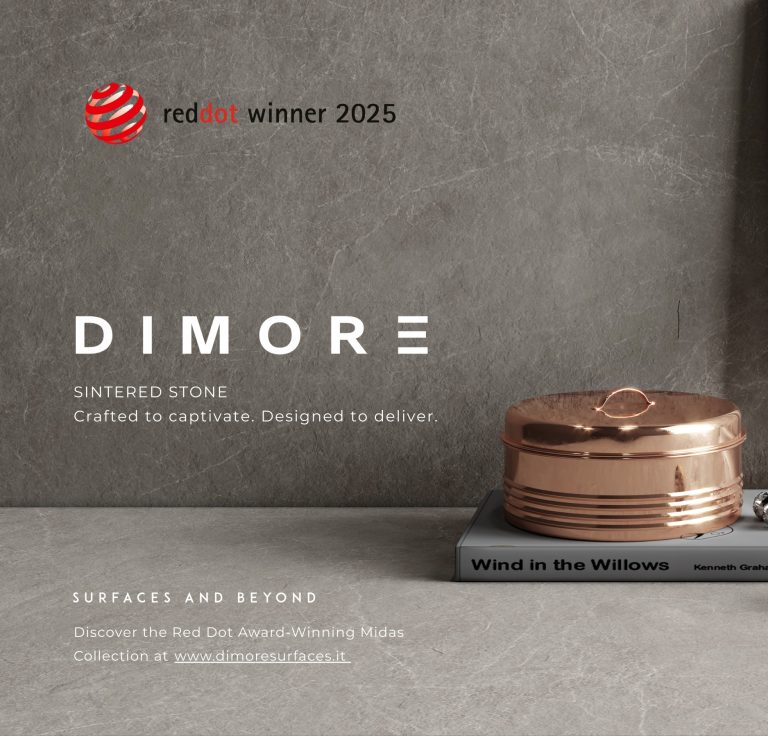Should architecture blend into nature, rendering itself invisible? Or should it stand as a foil against the organic? Or should the two remain intertwined, demanding a conscientious in-between? In the expert hands of Pritzker Prize Laureate Tadao Ando, architecture frames its context, and is in turn informed by it. Opened to the public recently, the Japanese architect’s Australian debut MPavilion 10 at the Queen Victoria Gardens, Melbourne, interweaves his signature use of concrete’s austere tectonic language into a bold structure that relents and unfurls, inviting you inside.
Architecture of honesty
In the absence of adornment, the minimalist design pulsates with geometric rigour in contrast with a tranquil body of water that skirts one-half of the circular form, articulating an exquisite complexity of movement and stillness. Imagine a majestic canopy of an aluminium disc serenading the sky, its weight poised delicately on a central concrete column with light filtering in through a gap. Ando subverts the rules of architecture, brazenly displaying the separation between the light roof and stoic walls— an honesty of material expressed through precise construction.

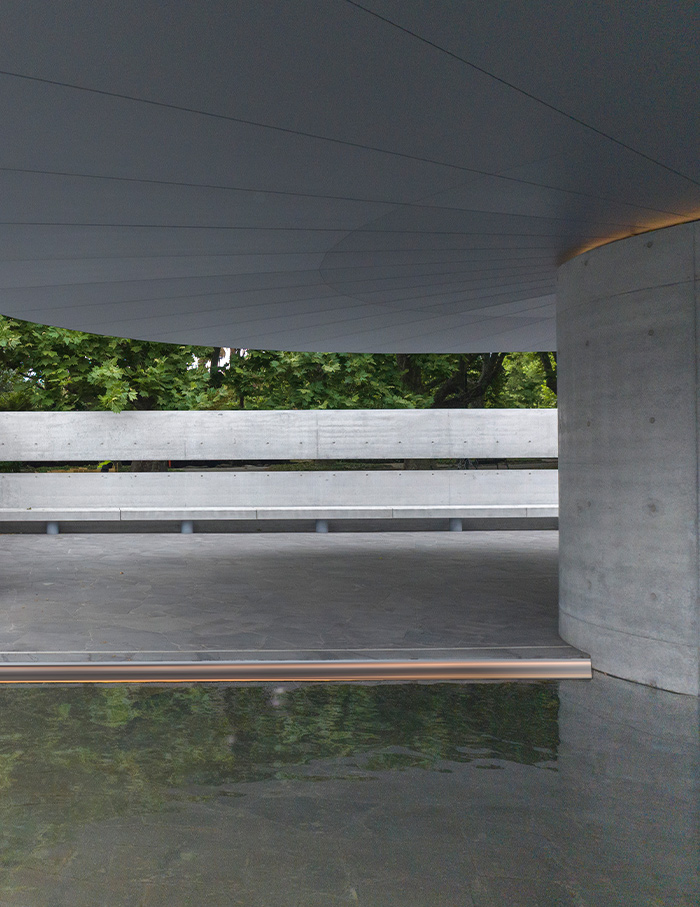
Materiality and meaning
Beckoning visitors through two offset squares, the pavilion opens a portal to its soul. Here, concrete walls of various lengths, like protective sentinels, partially enclose the space, reminiscent of a Japanese walled garden. In a mastery of light and perspective, Ando carves long horizontal openings that frame both Melbourne’s downtown and the verdant Queen Victoria Gardens. Step inside, and Ando’s play of symmetry entraps you in wonderment. Half the floor is paved and reflects the other half in geometry, a shimmering pool mirroring the celestial clouds and the ethereal form. This assemblage of light, water, and concrete is an invitation for quietude, a space where you can commune with self and nature.

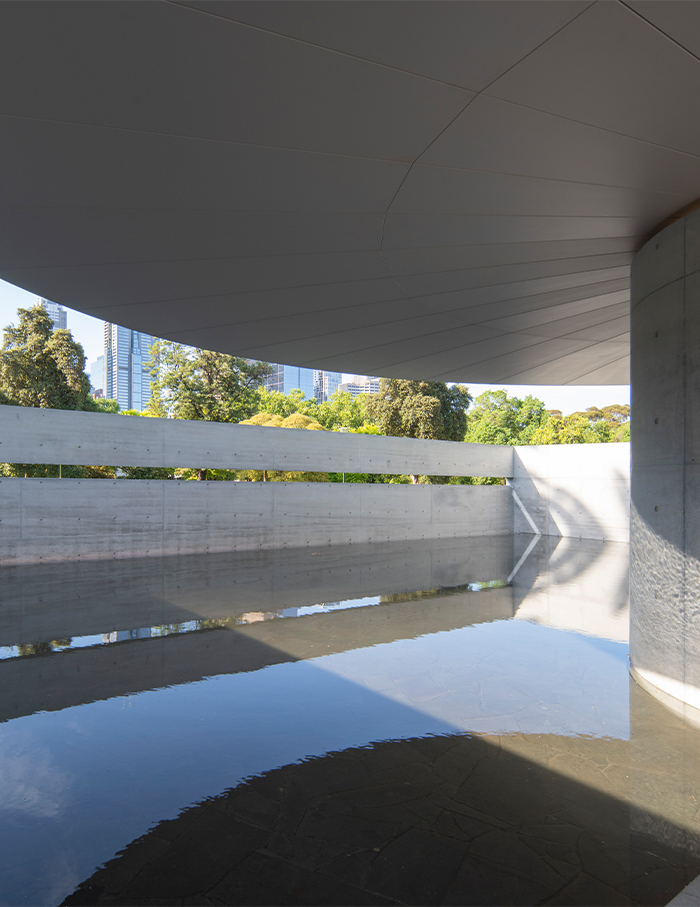
Inspired by the maestro
Ando’s vision extends beyond the pavilion’s walls. Ten artists and designers, inspired by his poetry in concrete, draft their own creations in the five-month design festival. Deborah Cheetham Fraillon AO’s tenth song of the Wominjeka Song Cycle will be performed by the Dhungala Children’s Choir, while Davidov Architect’s ‘Circle | Square’ chair celebrates Ando’s spatial purity. With the concrete masterpiece acting as a muse for numerous creative expressions, the event of MPavilion becomes a platform for dialogue, engaging and furthering the conversation on the evocative power of design.
You may also like: Revered creative Tadao Ando’s design for an abode in the Japanese capital is an architectural masterpiece, unique in its shape and style

